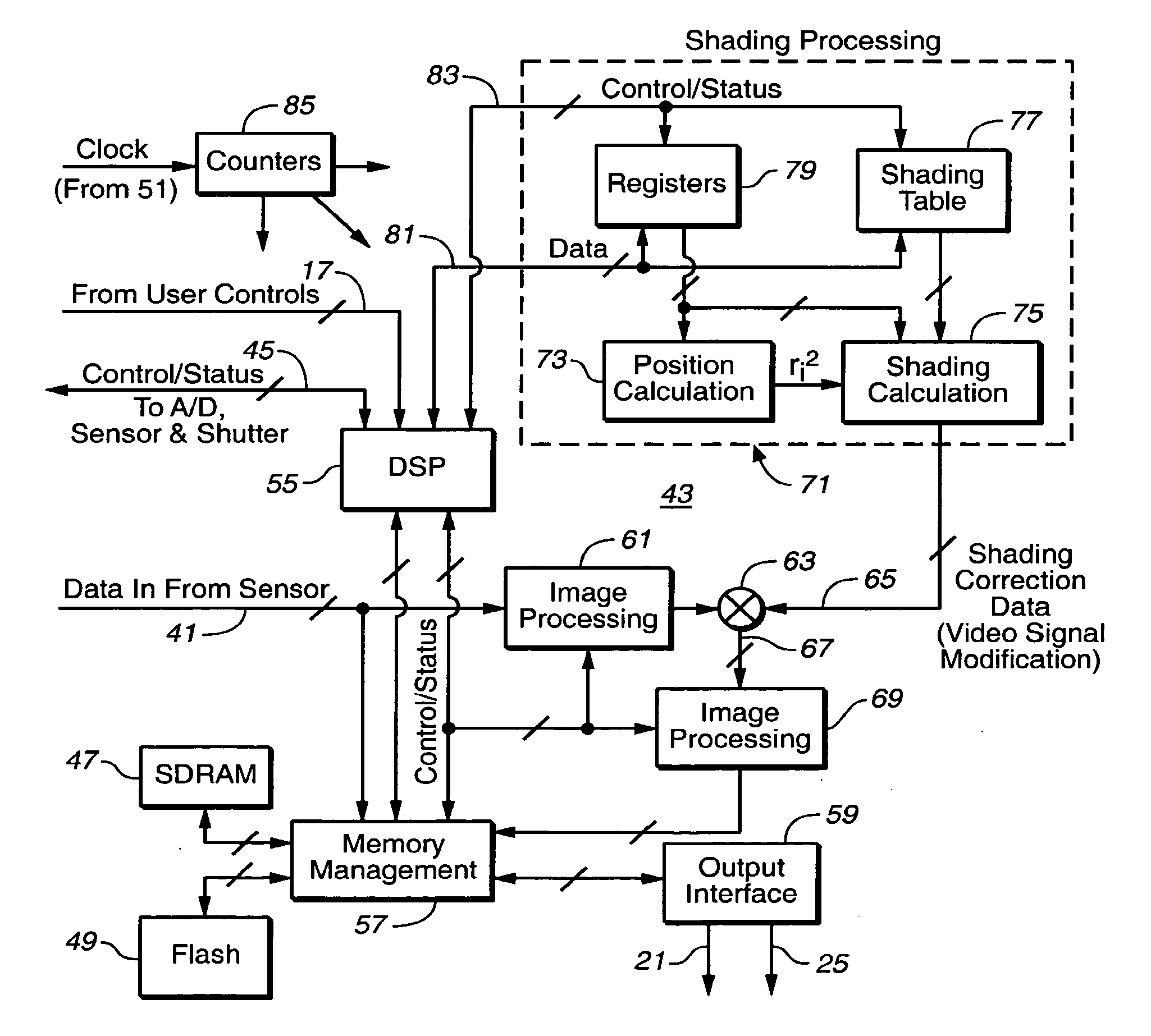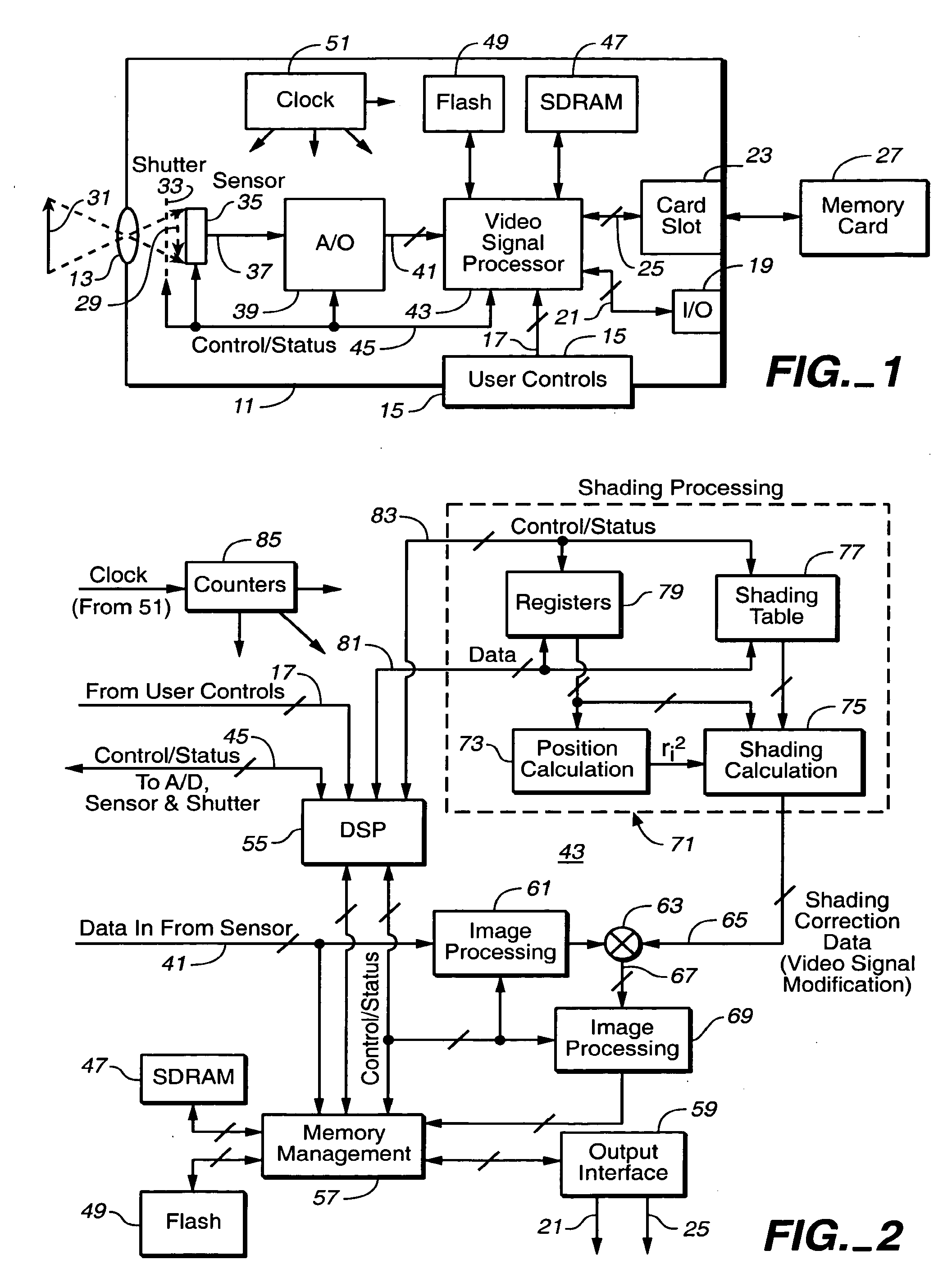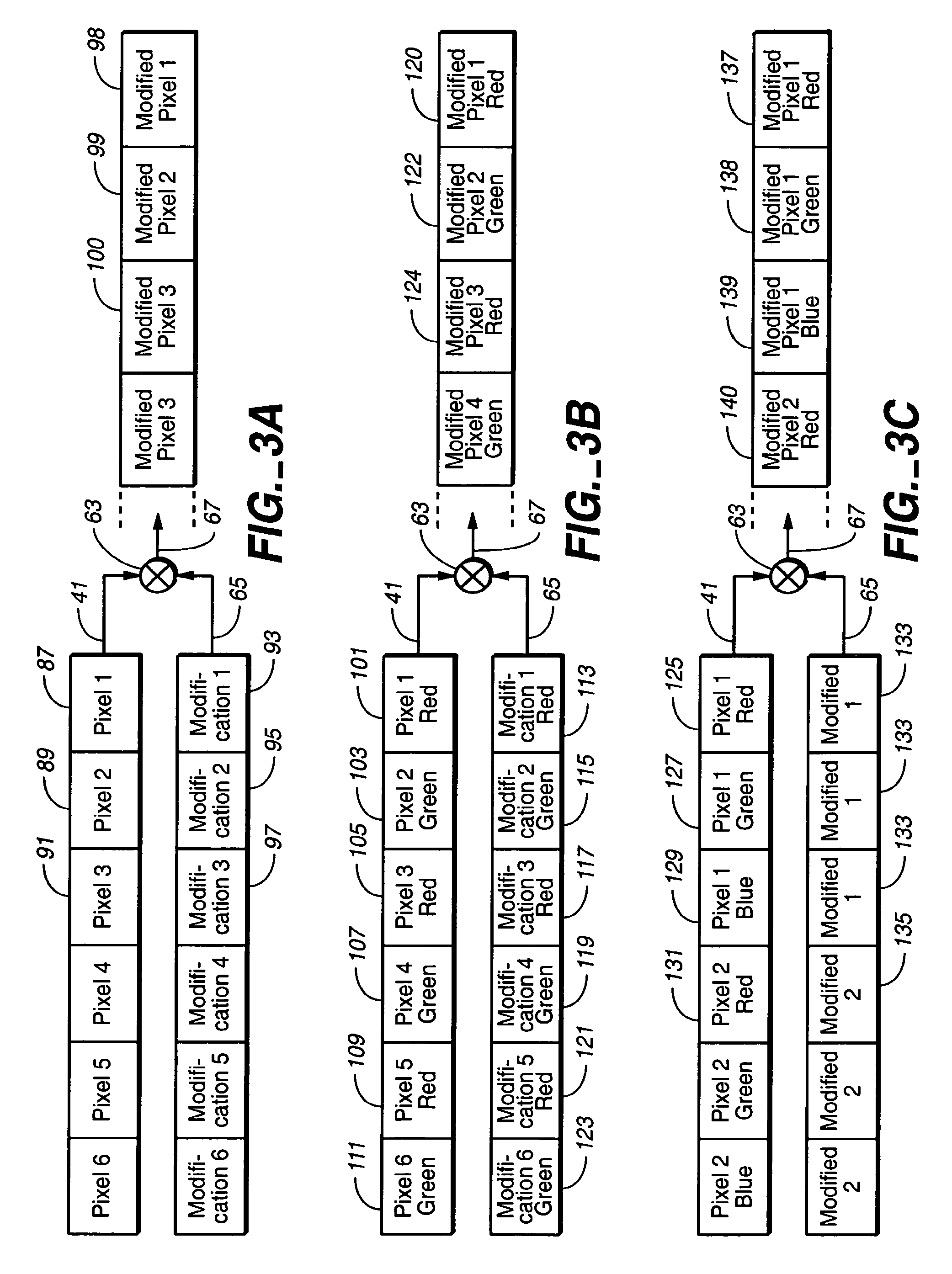Techniques for modifying image field data as a function of radius across the image field
a technology of image field and radius, applied in the field of video signal processing, can solve the problems of significantly non-uniform image of scene, which is not suitable for most optical applications, and achieves the effect of low cost and not adversely affecting the performance of the video system
- Summary
- Abstract
- Description
- Claims
- Application Information
AI Technical Summary
Benefits of technology
Problems solved by technology
Method used
Image
Examples
Embodiment Construction
[0018]An implementation of the techniques of the present invention is described in a camera or other video acquisition device where digital data of the image(s) are modified on the fly to compensate for intensity modifications superimposed across the image by the camera's optical system, photo-sensor and reflections from internal camera surfaces. In FIG. 1, such a camera is schematically shown to include a case 11, an imaging optical system 13, user controls 15 that generate control signals 17, a video input-output receptacle 19 with internal electrical connections 21, and a card slot 23, with internal electrical connections 25, into which a non-volatile memory card 27 is removably inserted. Data of images captured by the camera may be stored on the memory card 27 or on an internal non-volatile memory (not shown). Image data may also be outputted to another video device through the receptacle 19. The memory card 27 can be a commercially available semiconductor flash electrically era...
PUM
 Login to View More
Login to View More Abstract
Description
Claims
Application Information
 Login to View More
Login to View More - R&D
- Intellectual Property
- Life Sciences
- Materials
- Tech Scout
- Unparalleled Data Quality
- Higher Quality Content
- 60% Fewer Hallucinations
Browse by: Latest US Patents, China's latest patents, Technical Efficacy Thesaurus, Application Domain, Technology Topic, Popular Technical Reports.
© 2025 PatSnap. All rights reserved.Legal|Privacy policy|Modern Slavery Act Transparency Statement|Sitemap|About US| Contact US: help@patsnap.com



